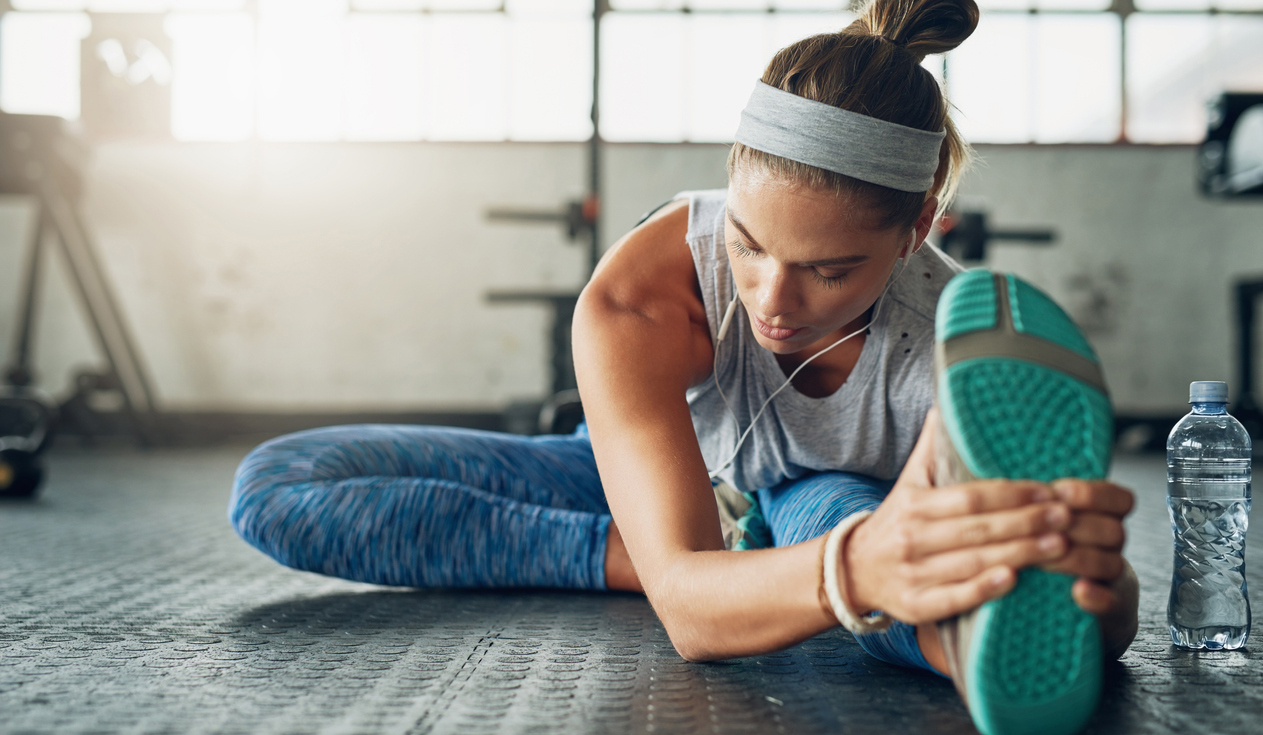Why a Simple Leg Raise Reveals A Surprising Amount About Your Body
The Active Straight Leg Raise looks simple.
You basically lie face up on the ground, then lift one leg as high as possible while trying to keep the other leg pressed against the ground. Both legs must remain straight with a neutral foot position.
Simple, right?
But that straightforward action can reveal a lot about your body.
The Active Straight Leg Raise, or ASLR, is one of the fundamental tests of the Functional Movement Screen. FMS defines it as a “lower reciprocal pattern that assesses dynamic hip mobility while simultaneously looking at core stability and motor control of the trunk and pelvis during single-leg hip hinging.”
In the video below, Ryan Summers, co-owner of Pure Physio (Strongsville, Ohio) outlines what to look for during the ASLR as well as two moves which can help limiting factors of the test.
“What we’re looking at for this test is does he have the ability and the posterior chain length to get this leg to about 70 degrees of flexion, while also maintaining extension through (the bottom) leg. The reason why this is really important is because for a lot of our field athletes, when they’re sprinting, to be able to have that control through this side without (the other) leg compensating as a result. But also, for a lot of our lifting athletes, when they’re doing something like a Split Jerk, and this leg is going forwards, and this leg is going backwards,” Summers says.
“We’re looking for the ability to disassociate the pelvis with this one leg coming into flexion and the other leg coming into extension.”
If an athlete has trouble getting to that 70 degrees of flexion without compensation, the Reverse ASLR, demonstrated in the above video, can be a great path to improvement.
“Do three sets of five to six reps on each side, with an extra set on the side that’s a little bit more limited,” recommends Summers. “We’d follow that up with a Good Morning or Romanian Deadlift to get some eccentric load down through that backside and slowly work that (sequence) into their training.”
READ MORE:
RECOMMENDED FOR YOU
MOST POPULAR
Why a Simple Leg Raise Reveals A Surprising Amount About Your Body
The Active Straight Leg Raise looks simple.
You basically lie face up on the ground, then lift one leg as high as possible while trying to keep the other leg pressed against the ground. Both legs must remain straight with a neutral foot position.
Simple, right?
But that straightforward action can reveal a lot about your body.
The Active Straight Leg Raise, or ASLR, is one of the fundamental tests of the Functional Movement Screen. FMS defines it as a “lower reciprocal pattern that assesses dynamic hip mobility while simultaneously looking at core stability and motor control of the trunk and pelvis during single-leg hip hinging.”
In the video below, Ryan Summers, co-owner of Pure Physio (Strongsville, Ohio) outlines what to look for during the ASLR as well as two moves which can help limiting factors of the test.
“What we’re looking at for this test is does he have the ability and the posterior chain length to get this leg to about 70 degrees of flexion, while also maintaining extension through (the bottom) leg. The reason why this is really important is because for a lot of our field athletes, when they’re sprinting, to be able to have that control through this side without (the other) leg compensating as a result. But also, for a lot of our lifting athletes, when they’re doing something like a Split Jerk, and this leg is going forwards, and this leg is going backwards,” Summers says.
“We’re looking for the ability to disassociate the pelvis with this one leg coming into flexion and the other leg coming into extension.”
If an athlete has trouble getting to that 70 degrees of flexion without compensation, the Reverse ASLR, demonstrated in the above video, can be a great path to improvement.
“Do three sets of five to six reps on each side, with an extra set on the side that’s a little bit more limited,” recommends Summers. “We’d follow that up with a Good Morning or Romanian Deadlift to get some eccentric load down through that backside and slowly work that (sequence) into their training.”
READ MORE:









